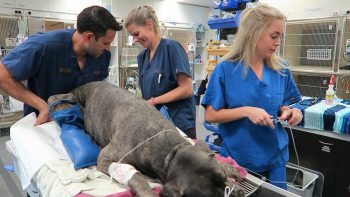4 Apr 2022
Despite research associating gastric lavage with worse patient outcomes, Gerardo Poli says some uncommon cases may benefit from the technique.

We all know that sinking feeling when a patient has been known to have ingested highly toxic material and all effort to induce emesis had been unsuccessful. So, the next logical step is to perform a gastric lavage, isn’t it?
In recent reviews of the effectiveness of gastric lavage1-3 – using animal and human oral poisoning data over 50 years – it appears the procedure does more harm than good in most cases.
In fact, gastric lavage has been associated with worse patient outcomes (especially with aspiration pneumonia) and intensive care admission, while the omission of the procedure is not associated with poorer patient outcomes.
Saying that, some uncommon cases may benefit from gastric lavage, including:
The cases unlikely to benefit are those where it has been more than 60 to 120 minutes from the time of ingestion and toxins that are rapidly absorbed (ethanol, propanol, isopropanaol, ethylene glycol and aspirin, for example).

Gastric lavage should only be considered if other less invasive and less risky techniques (oral activated charcoal or nasogastric aspiration) are not feasible, or if the potential benefit of lavage outweighs the potential risks.
Single-dose activated charcoal treatment has been found to be at least as effective as gastric lavage and significantly less risky in most situations.
Due to the inherent risks of gastric lavage, it should never be used for the sole purpose of collecting a toxicological sample.
If you find yourself having to perform a gastric lavage, here are some things I do to reduce the risk of aspiration: